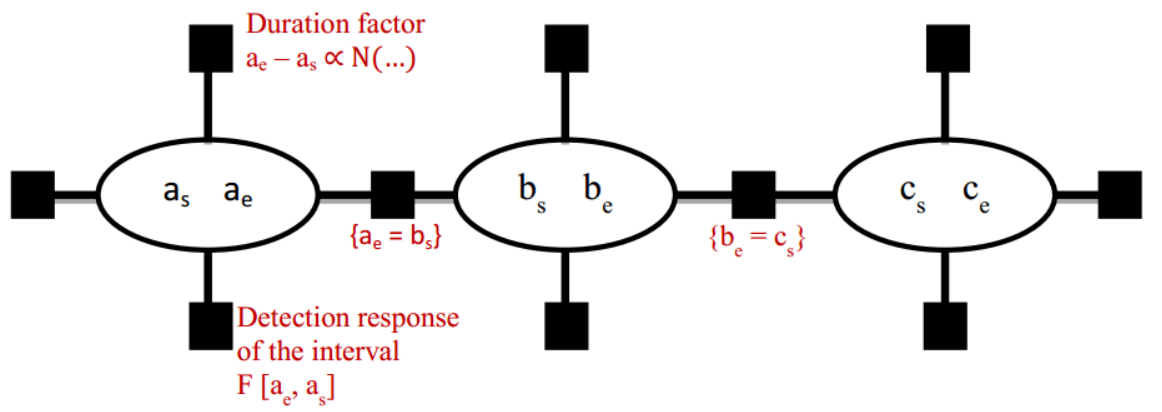From
Stochastic Grammar to Bayes Network:
Probabilistic Parsing of Complex Activity
Nam N. Vo Aaron F. Bobick
Abstract
We
propose a probabilistic method for parsing a temporal sequence such
as a complex activity defined as composition of
sub-activities/actions. The temporal structure of the high-level
activity is represented by a string-length limited stochastic
context-free grammar. Given the grammar, a Bayes network, which we
term Sequential Interval Network (SIN), is generated where the
variable nodes correspond to the start and end times of component
actions. The network integrates information about the duration of
each primitive action, visual detection results for each primitive
action, and the activity's temporal structure. At any moment in time
during the activity, message passing is used to perform exact
inference yielding the posterior probabilities of the start and end
times for each different activity/action. We provide demonstrations
of this framework being applied to vision tasks such as action
prediction, classification of the high-level activities or temporal
segmentation of a test sequence; the method is also applicable in
Human Robot Interaction domain where continual prediction of human
action is needed.
Sequential Interval Network
Different from time sliced graphical models (HMM, DBN, temporal CRF), our network models the timings of the primitive components (in our application: the actions) instead of the state of each time-step; thus allowing principle reasoning on interval level (for example: duration).To parse a simple activity S defined as a sequence of a, b, c, the following network is generated, where variables are the start & end time of each action:



Experiment Result
- Toy assembly activity: qualitative result [Supplementary Video]. Application in Human-Robot Collaboration [Video].
- Weizmann action synthetic data: segmentation accuracy 93% (state-of-the-art 88%).
- GTEA dataset: best segmentation accuracy 58% (state-of-the-art 42%).
- CMU-MMAC, making Brownie activity (ego-centric video): best segmentation accuracy 59% (state-of-the-art 32%).
Code & Data
Paper
- From Stochastic Grammar to Bayes Network: Probabilistic Parsing of
Complex Activity. Nam N. Vo and Aaron F. Bobick
CVPR 2014 [Paper] [Supplementary document] - Sequential Interval Network for Parsing Complex Structured Activity. [Journal draft]